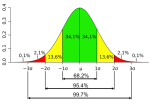Here is the dilemma I have. I load for my 223 bolt rifle using Lapua Brass, 69 SMKs and federal SR primers. I am getting very accurate loads out of this rifle. I have shot it out to 500 and it maintains around 1/2 moa (yes a 2.5 inch group at 500). I recently got a Magnetospeed Chronograph and put it on this load as i was curious what the speed might be since accuracy was so good. The SD showed to be around 23 after 14 rounds. While speed was around 300 FPS slower that it should be with that bullet (2640 fps).
To give you a background on my loading procedures (which I have found to be labeled as "anal" after a recent thread) they are as follows. FL size 223 brass, throw a charge with Hornady electronic powder dispenser that is short of target weight, then I trickle up to final weight. Seat the bullet and put it in the box. I am not sure how I could be more specific with my loading procedures without wanting to eat one of those rounds.
I guess what is making me scratch my head the most is you see everyone talking about "look how low my SD numbers are"... Best I can tell, low SD numbers don't necessarily mean shit if my rifle shoots as good as it does with an SD in the 20's. Any thoughts or suggestions are welcome.
This is a pic of a 5 round group I shot at 100 off a bipod and bag when I was using the Magnetospeed today. 1 inch circle

To give you a background on my loading procedures (which I have found to be labeled as "anal" after a recent thread) they are as follows. FL size 223 brass, throw a charge with Hornady electronic powder dispenser that is short of target weight, then I trickle up to final weight. Seat the bullet and put it in the box. I am not sure how I could be more specific with my loading procedures without wanting to eat one of those rounds.
I guess what is making me scratch my head the most is you see everyone talking about "look how low my SD numbers are"... Best I can tell, low SD numbers don't necessarily mean shit if my rifle shoots as good as it does with an SD in the 20's. Any thoughts or suggestions are welcome.
This is a pic of a 5 round group I shot at 100 off a bipod and bag when I was using the Magnetospeed today. 1 inch circle



